#radical deconstructivist designs
Explore tagged Tumblr posts
Text
Zaha Hadid (1950-2016)
زها حديد Zahā Ḥadīd | Dame Zaha Mohammad Hadid DBE RA (31 Oct 1950 – 31 Mar 2016) was an Iraqi-British architect, artist and designer, recognised as a key figure in architecture of the late-20th and early-21st centuries. via W #PalianSHOW
زها حديد Zahā Ḥadīd Dame Zaha Mohammad Hadid DBE RA 31 Oct 1950 – 31 Mar 2016 was an Iraqi-British architect, artist and designer, recognised as a key figure in architecture of the late-20th and early-21st centuries. Born in Baghdad, Iraq, Hadid studied mathematics as an undergraduate and then enrolled at the Architectural Association School of Architecture in 1972. In 2004 she became the…
#ARCHITECT#british#British architect#Iraqi-born#Iraqi-born British architect#Iraqi-British#Pritzker Architecture Prize#radical deconstructivist designs#the first woman#Zahā Ḥadīd#زها حديد
3 notes
·
View notes
Text
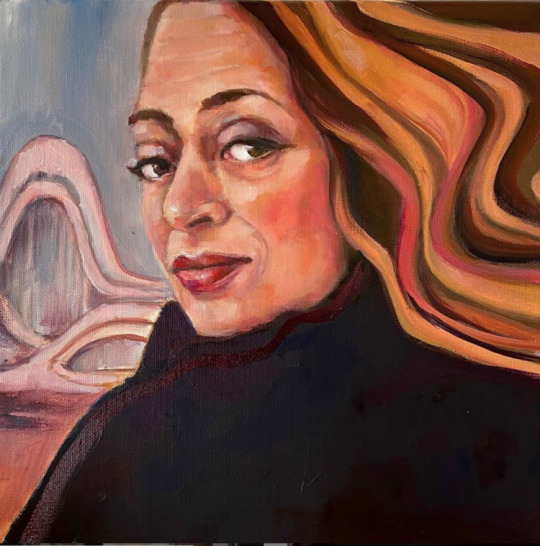
Zaha Hadid by Allison Adams
Dame Zaha Hadid (1950-2016) was an Iraqi-born British architect, known for her radical Deconstructivist designs. In 2004 she became the first woman to be awarded the Pritzker Architecture Prize, the highest honor of her field. In the early days of her career, she became known as a “paper architect,” meaning her designs were too avant-garde to move beyond the sketch phase and actually be built. This impression of her was heightened when her beautifully rendered designs—often in the form of exquisitely detailed colored paintings—were exhibited as works of art in major museums. Her major built works include the London’s Millennium Dome, the London Aquatics Centre (built for the 2012 Olympics) Michigan State University's Broad Art Museum in the US, the MAXXI Museum in Rome, and the Beijing Daxing International Airport in China. She was referred to as the "Queen of the curve", who "liberated architectural geometry, giving it a whole new expressive identity".
#zaha hadid#Allison adams#art#artwork#female portrait#architecture#architect#herstory#female artists#women artists#woman#women#irl women/girls
1 note
·
View note
Text
The Evolution of Architectural Styles
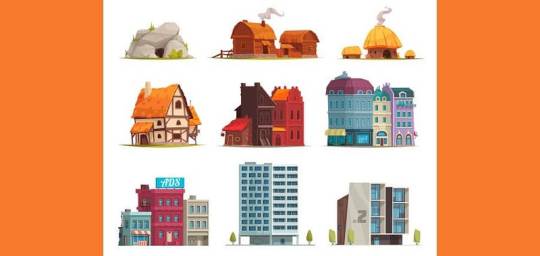
From Classical to Contemporary
As evidence of human creativity and ingenuity, architecture has undergone a remarkable journey of evolution throughout history. From the classical columns of ancient Greece to the sleek lines of contemporary structures, each architectural style reflects the socio-cultural, functional, and technological aspects of its time.
Classical Architecture- The Foundations of Beauty and Symmetry
The journey begins in ancient Greece, where the roots of Classical Architecture took hold. Characterized by its adherence to order, symmetry, and the use of architectural orders like Doric, Ionic, and Corinthian, this style laid the groundwork for many architectural principles that persist today. Iconic structures such as the Parthenon in Athens exemplify the grandeur and precision of classical design, showcasing an enduring fascination with proportion and harmony.
Modernism- A Paradigm Shift Towards Functionality and Simplicity
Fast forward to the early 20th century, and the architectural landscape witnessed a radical departure from tradition with the advent of Modernism. Rejecting excessive ornamentation, modernist architects championed functionalism, clean lines, and the use of new-age materials like steel, glass, and concrete. Pioneers such as Le Corbusier and Ludwig Mies van der Rohe embraced a mantra that “form follows function,” paving the way for a new era of architectural expression.
Contemporary Architecture- A Fusion of Innovation and Diversity
In the latter half of the 20th century and into the 21st century, architecture underwent a metamorphosis into what we now recognize as Contemporary Architecture. Characterized by a fusion of components such as curved lines, unconventional volumes, sustainable materials, and a rejection of traditional norms, contemporary architecture is a reflection of a rapidly changing world.
Neofuturism- A Glimpse into the Future of Functionality
As we stand on the cusp of the 21st century, a new architectural style emerges — Neofuturism. Rooted in functionality within urban environments, Neofuturism embraces a futuristic aesthetic. Architects explore innovative materials and design principles to create structures that seamlessly integrate with the modern urban landscape. This style symbolizes a forward-looking approach, blending technological advancements with a focus on the practical needs of urban life.
Sustainable Architecture- A Call to Environmental Responsibility
In response to growing environmental concerns, the 21st century witnessed the rise of Sustainable Architecture. This style focuses on the use of environmentally friendly materials, energy-efficient designs, and a holistic approach to construction. Architects prioritize creating buildings that minimize their ecological footprint, embracing renewable energy sources and sustainable building practices.
Deconstructivism- Unraveling the Traditional Form
In the late 20th century, architects like Frank Gehry and Zaha Hadid embraced Deconstructivism, a style characterized by the manipulation of form and the fragmentation of architectural elements. Unconventional and complex structures emerged, challenging traditional notions of stability and coherence. Deconstructivist buildings often appear as if they are in a state of flux, inviting viewers to question and explore the relationships between space and form.
Conclusion
In the evolution of architectural styles, from Classical to Contemporary and beyond, we witness innovation, functionality, and cultural expression. Each style reflects not only the technological capabilities of its time but also the societal values and aspirations that architects sought to encapsul
READ MORE: https://homendecormagazine.com/the-evolution-of-architectural-styles/
SOURCE: https://homendecormagazine.com/
Art and Decorative Accents
Home n Decor Magazine
Design and Lifestyle
0 notes
Text
Deconstructivism

Gehry House
Definitions:
(Merriam webster) “An architectural movement or style influenced by deconstruction that encourages radical freedom of form and the open manifestation of complexity in a building rather than strict attention to functional concerns and conventional design elements (such as right angles or grids).”
(M Wigley)”A deconstructive architect is not one who dismantles buildings, but one who locates the inherent dilemmas within buildings”.
At some point between 1914 and 1918 (first world war) some Russian architects “broke the rules of classical architecture and composition”, as said on Arch daily. The designs they had drawn had abandoned the “geometric norm”(Arch daily). After lots of experimentating with shapes and forms, the architects “disturbed the traditional perception of architecture and opened people’s eys to the endless possibilities of breaking architecture rules”(Arch daily). Breaking the classic rules of architecture by ‘deconstructing’ the traditioal ways led to a revolution. People viewed construction and design differently, with open minds, as they saw the countless possibilities.
According to Owen Hopkins, Deconstructivism was “one of the most significant architecture style of the 20th century”. This is true due to the massess of change it brought along. The norms of architecture were broken - people could see that there isn’t just right or wrong anymore, things weren’t just black or white. It was clear then that things could change, they could be different - and if architecture and construction, out of all things, could be changed then surely anything could be. These new discoveries, of the 20th century, led to a philosophical movement around the world.
“An architect has always dreamt of pure form… from which all instability and disorder have been excluded”, as highlighted by M Wigley. This is what created the rules of architecture known as ‘the norms’. The rules stuck around as they worked with civilisations knowledge – which provided stability for their designs and structures.
(Kadvacorp)Characteristics:
“Unrelated forms
Abstract in nature
Smooth exterior surfaces
Contrast of shapes and forms
Large expanses of a single material (e.g. glass, metal, etc)
Simple metal door frames
Exposed materials
Window frames hidden in the walls
The word deconstruction can be very easily misinterpreted due to the words usual meaning of deconstructing a structure and dismantling it/ knocking it down. It was and is very important that people understand that Deconstructive architecture isn’t about dismantling a building but rather the separation of a design to create impurity – as explained by M Wigley, “the dream of pure had been disturbed”.
References:
AJ. “Deconstructivism - Deconstructive Architecture Style Characteristic.” Kadva Corp, 19 Feb. 2015, www.kadvacorp.com/design/deconstructive-architecture-style/#:~:text=Key%20Features%20of%20Deconstructivism%20Architecture%20Style%3A%201%20Unrelated.
“Definition of DECONSTRUCTIVISM.” Www.merriam-Webster.com, www.merriam-webster.com/dictionary/deconstructivism.
Dima Stouhi. “What Is Deconstructivism?” ArchDaily, 12 Aug. 2018, www.archdaily.com/899645/what-is-deconstructivism.
Hopkins, Owen. “Deconstructivist Architecture “Challenges the Very Values of Harmony, Unity and Stability” .” Dezeen, 3 May 2022, www.dezeen.com/2022/05/03/deconstructivist-architecture-introduction/.
Johnson, Philip, and Mark Wigley. Deconstructivist Architecture. New York, Moma, Cop, 1998, www.moma.org/documents/moma_catalogue_1813_300062863.pdf?_ga=2.145925044.1469358646.1683646190-646892538.1683646190.
Srivastava, Tulisha. “Gehry House,” Re-Thinkingthefuture, www.re-thinkingthefuture.com/2021/03/22/a3661-gehry-residence-by-frank-gehry-balance-between-old-and-new/.
8 notes
·
View notes
Text
Art is cheap, humans are the value.

Puerto Rico, a hot night, a rough venue, a great time.
The food is good (fried, oily, salty, mofongo, timelessly tasty to human tastebuds), the people are spirited, excited. Even though the plates are styrofoam, the chairs are plastic, everyone has to walk a ways to get here and put up with the musty building, the sweat and the heat, we have fun.

As time passes we are distanced from aesthetic immersion. In retrospect we see that all styles are just as rough, inherently imperfect, two-dimensional. It is a myth that great art is "technically perfect". This is why I sold the 1DX: to challenge myself to develop my relationship with the aspects of "art making" away from technical execution. (And although I believe the best artists integrate the new possibilities of the cutting edge with their purpose, I have a ways to go to discover my purpose with creation.) To make great art, believe in your rough sketch first: real [radical] innovation comes from your message or aim, then socializing it into the crowd [incrimental].
Artifacts –plates, chairs, neighborhoods, clothes– are just pieces of the actor network allowing fun moments to arise: a pulse of fun, deindividuation, immersion, meeting new people, pleasurable scents and tastes, friendship: a reincarnation of the same human needs with more phenomenologically fit institutional arrangements. These revolutions are the nature of the social world (society). Continual performance of culture, and adoption of novelties (including artists) is elected by individuals following shared imaginations.
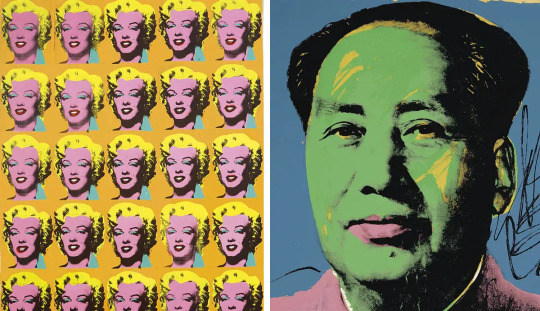
Celebrating art kinda celebrates a narrative of goods dominant logic. Celebrities are a hallmark of modernist fame. What would post-modern fame look like? Brand mysticism saves people from facing raw truths and venerates via symbolisization. Institutions shelter the mind from infinite complexity. Myth [the lamarckinian, storytelling] is not bad – it can be beautiful or effective. Art is myth (resisitation or making).
Myths are spoken into reality, solidified, institutionalized, symbolized. They are the only things we have as cultures. They drive humanity. Your thoughts are your mental culture. Thoughts become attitudes become words become behaviors become actions become norms become processes become artifacts (TAWBANPA). Darwin, science, design, is the same deconstructivist intellectual power that enables me to see and recode the myth matrix, create innovative cultural artifacts, and live an emancipatory divergent life.
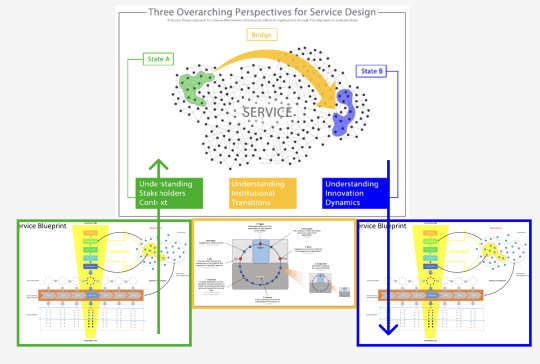
Helping humanity transition and become consists of 1) making aware, critique, reflection 2) shifting thoughts/behaviors/artifacts (trigger, entry, journey, exit) 3) imagining the future, making it real - all TAWBANPA.
A macro change consists of meso and micro changes.

"Making things better" can focus on 1) instrumental optimization 2) practical coordination systems 3) emancipatory innovation.

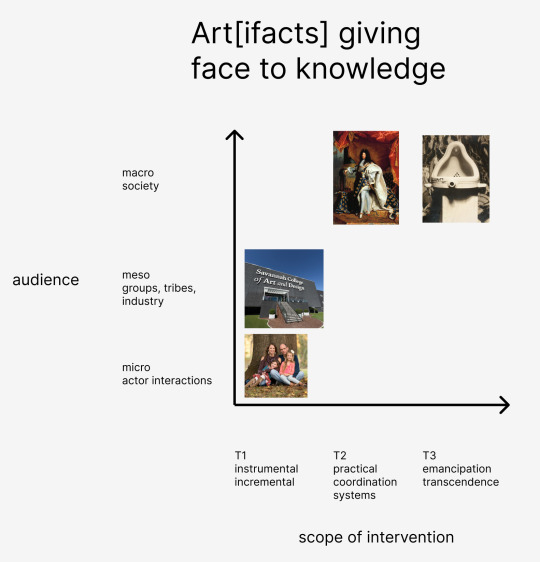
Famous art (narratives) strikes a chord with the powers that be (effectuation) to earn a stage and an audience: the job of an artist.
-----
ok I've been writing for too long, ending with: Art makes myths real. Myths give people purpose. I want people to realize fun, community, exploration, zen, learning. I need to create a profitable distribution mechanism.
The distribution mechanism, art pieces, medium, message, monetization are all narrative institutions. Today's exploration is of frameworks to generate pages and chapters for the ongoing story.
0 notes
Text
Space
For me as thoughts are organic and surrealist, space is deconstructed and therefore is influenced in my drawings by russian deconstructivist design. The daily deconstruction of space.
I am a big fan of the russian avant-garde so I am influenced by their radical designs for this assignments spatial reconstruction, or lacktherof.
1 note
·
View note
Note
Hi Archy, have you got examples of deconstructivist buildings ?
Definition of deconstructivism : an architectural movement or style influenced by deconstruction that encourages radical freedom of form and the open manifestation of complexity in a building rather than strict attention to functional concerns and conventional design elements (such as right angles or grids). via
Here are some examples of deconstructivism:

Vitra Design Museum Frank Gehry

Parc de la Villette Bernard Tschumi Architects

Vitra Fire Station Zaha Hadid

Jewish Museum Berlin Daniel Libeskind

Seattle Central Library OMA

UFA Cinema Center - Coop Himmelb(l)au
196 notes
·
View notes
Photo










Maison Martin Margiela 20 The Exhibition
Bob Verhelst and Kaat Debo in collaboration with Maison Martin Margiela
MoMu, Antwerp 2008 - 120 pages , 120 colour illustrations, 70 b&w illustrations
euro 220,00*
email if you want to buy :[email protected]
This book is the catalogue which accompanied the original Antwerp exhibition, and captures Maison Martin Margiela’s deconstructivist, subversive, and often radical approach to fashion, through an examination of the themes and influences that have underpinned the fashion house since its creation. Through colour and black and white photography the book documents 20 years of Maison Martin Margiela collections, fashion shows, events, shop designs, and much more.
Employing a ‘deconstructivist’ approach – monochromatic palette, outsized garments, non-traditional fabrics, the use of recycled materials and exposing the construction of his clothes – Margiela displayed a radically new visual language that diametrically opposed the power dressing of the 1980s
Limited Edition of 3500 copies
orders to: [email protected]
twitter: @fashionbooksmi
flickr: fashionbooksmilano
instagram: fashionbooksmilano
tumblr: fashionbooksmilano
233 notes
·
View notes
Text
Are You Searching Best Architectural Rendering Service?
If you are unaware about architectural rendering then you should know that it is nothing but visual representation of any scheme. One can also define it as a visual representation of architectural design of any structure which has to be built. Radical deconstructivist architecture designs is used for the presentation of a variety of purpose which includes urban planning, buildings, landscape projects and numerous other things. The demand of hand-drawn rendering service has decreased to a great extent because of the presence of better and more appealing option of architectural Interior Design Jeddah in the market. Today, there are so many Modern Architecture thinking towards this type of technology. Architectural rendering is getting more and more popular, and this service is in great demand because of the application of virtual image and computer graphic application concept.
You can get an idea about the usefulness of this option just by taking an example under your consideration. 3D Parametric architecture design view of the building or any other structure helps a lot in taking a lot of designs related decisions before the project commences to make the structure more beautiful and safer. There is no doubt in the fact that architectural rendering of Modern villa design has become an integral part of today’s architectural marketplace because of its numerous benefits. With the help of this option now one can get a different visual output format of the structure before it is built. One will also be able to see the exterior as well as interior design and structure of the building with this option.

You should know this fact that for generating an architectural rendering model of the required structure complex rendering software and 3D Architectural digital design is used so that a life like image can be generated which will cover every aspect of the structure. If you have a desire of using this very useful option, then you will have to submit a proposal to the Rendering Company or service along with all the details of the structure or building. Within a week or two you will receive the 3D model of your project. You should know this fact that architectural rendering has helped the architectures by making their work easier as now they won’t have to waste their valuable time in manual process of drawing the project on a sheet with their hands.
You should know this fact that this very Contemporary architecture service is highly useful and realistic in nature. You will get full visual details of the structure or construction plan, and you will also get the true replica of the structure after it gets completed. Since architectural rendering is realistic, therefore they are more convincing than the traditional handmade drawings of the structure. You can view any particular construction of the building from various points of view. One cannot get the same result with 2D rendering service, so it will be good for you to choose advanced and modern service.
0 notes
Text
DECONSTRUCTIVISM
Deconstructivism is a development of postmodern architecture that began in the late 1980s. It is characterized by ideas of fragmentation, an interest in manipulating ideas of a structure's surface or skin, non-rectilinear shapes which serve to distort and dislocate some of the elements of architecture, such as structure and envelope. The finished visual appearance of buildings that exhibit the many deconstructivist "styles" is characterized by a stimulating unpredictability and a controlled chaos. Important events in the history of the deconstructivist movement include the 1982 Parc de la Villette architectural design competition (especially the entry from Jacques Derrida and Peter Eisenman[1] and Bernard Tschumi's winning entry), the Museum of Modern Art’s 1988 Deconstructivist Architecture exhibition in New York, organized by Philip Johnson and Mark Wigley, and the 1989 opening of the Wexner Center for the Arts in Columbus, designed by Peter Eisenman. The New York exhibition featured works by Frank Gehry, Daniel Libeskind, Rem Koolhaas, Peter Eisenman, Zaha Hadid, Coop Himmelb(l)au, and Bernard Tschumi. Since the exhibition, many of the architects who were associated with Deconstructivism have distanced themselves from the term. Nonetheless, the term has stuck and has now, in fact, come to embrace a general trend within contemporary architecture. Originally, some of the architects known as Deconstructivists were influenced by the ideas of the French philosopher Jacques Derrida. Eisenman developed a personal relationship with Derrida, but even so his approach to architectural design was developed long before he became a Deconstructivist. For him Deconstructivism should be considered an extension of his interest in radical formalism. Some practitioners of deconstructivism were also influenced by the formal experimentation and geometric imbalances of Russian constructivism. There are additional references in deconstructivism to 20th-century movements: the modernism/postmodernism interplay, expressionism, cubism, minimalism and contemporary art. The attempt in deconstructivism throughout is to move architecture away from what its practitioners see as the constricting 'rules' of modernism such as "form follows function," "purity of form," and "truth to materials."
0 notes
Text
Artist research
Philip Johnson American architect, Philip Cortelyou Johnson, was best known for his modern architectural works, which included the Glass House, Connecticut, and postmodern architectural works. His work contains the minimalistic values we see in many places these day and combines that factor with his Johnson's coining of the "International Style" moniker played an enormous role in defining what we now know as modernism. His style of work has inspired me as deprivation of extreme shades and patterns grants you access to sharper edged precision buildings with contrasting with softer corners/soft curves on his other work. I will use this style of architecture on some of my ideas as it compliments the precise and sharp edged structures which my project would fall under as to get something floating/suspended precision is key. Alex Bernstein The award winning sculptural glass artist creates the most beautiful sculptural pieces I seen with powerful covers and a sharp crystal like structure in some. Skilfully combining metaphor with sculpted glass's power and sensuality while retaining sense patience as like a diamond it lots of takes time and pressure to create. The juxtaposing feelings of growth of growth and decay with the oxidation of parts can be a great contrast as it gives it a dynamic of ‘fighting for life’ while showing the purest version of its. This makes the sculpture feel exposed and vast like the oceans many of them evoke with its simple tonal change with a limited colours pallet. This inspired me as with only colours and shapes Bernstein was able to cram in so much power and emotion into a static structure with the constant battle of waste/oxidised metal polluting out oceans. Frank Gehry The Canadian-born American architect made a name for his self by designing abstract structures such as the Walt Disney Concert Hall and the dancing house. In the Hall with the sweeping shapes and curves creating a structure that looks like multiple smaller buildings are crammed together while overlap and connect. I like this as I would be able to use more unorthodox designs and may be able to ‘camouflage’ within hilly terrain better. Where as the Dancing House only works in a urban environment as uneven design of it contrasts better while there are other structures to compare it to. Kjellander + Sjöberg and Folkhem The Swedish exhibition, The Forest of Venice brings up the problem with sustainable architecture with can be done with materials such wood. In a time where climate change imposes larger threats to everyday life consistently it is important to do what you can to help reduce the carbon footprint of architecture as a whole. What interests not only the environmentally friendliness, but also in the structures as they have a interesting layered method of construction which gives a unique tone in design. The structures are meant to be built onto millions of trees presenting wood as the ma in material. Peter Pitcher Born in Bolzano, Italy in 1982. He studied Architecture at the University of Applied Arts in Vienna, where he earned a Master's degree in Zaha Hadid. He believes that architecture must have a strong relationship with a specific location's history and culture. He is interested in examining and investigating the vernacular architecture, materials, and elements that can express a contemporary interpretation of the past in combination with technology. He has a vast variety of styles to use for his work as adapting to your surroundings my imply but also with himself personally as he can switch tram a traditional style like design to a complete abstract one with ease. Zaha Hadid An Iraqi-British architect known for her radical deconstructivist designs, which in my opinion resulted in her making one of the best designs. The Guardian of London described her as the "Queen of the Curve," who" liberated the geometry of architecture and gave her a whole new expressive identity."


0 notes
Text
Brutalism, Postmodernism and Deconstructivism
Marc Kushner in his talk goes over these three movements and this is what I picked up on and what he said about each.
Brutalism - It’s about concrete. Small windows, dehumanising scale. Tough Stuff.
Postmodernism - Is about symbols. They’re easy, they’re cheap.
Deconstructivism - rely on new, computer-aided design techniques, come up with new compositions, forms crashing into forms.
I then wanted to research further into these three movements and really get a feel to what they were about as I think these will be needed to be included in my editorial spreads or at least a feel for them.
Brutalism
Brutalism is an architectural style of the 1950s and 1960s characterised by simple, block-like forms and raw concrete construction.
What to look for in a Brutalist building
Rough unfinished surfaces
Unusual shapes
Heavy-looking materials
Massive forms
Small windows in relation to other parts
For decades brutalist architecture was a symbol of the underclass. Soulless, gray, crumbling concrete structures were something to escape from.
https://www.architecture.com/knowledge-and-resources/knowledge-landing-page/brutalism
https://www.architecturaldigest.com/story/london-brutalist-architecture
http://www.tate.org.uk/art/art-terms/b/brutalism
Postmodernism
In art, postmodernism was specifically a reaction against modernism which had dominated art theory and practice since the beginning of the twentieth century. The term postmodernism is also widely used to describe challenges and changes to to established structures and belief systems that took place in Western society and culture from the 1960s onwards.
http://www.tate.org.uk/art/art-terms/p/postmodernism
Walt disney swan hotel example - Michael graves
The Portland Building, Portland, USA, 1982 https://www.highsnobiety.com/2017/02/07/postmodern-architecture-examples/
Deconstructivism
Weird-looking, distorted, almost impossible-to-comprehend buildings that make you wonder how anyone could design, let alone build such a construct, are actually part of a very specific, non-rectilinear approach to design, called – Deconstructivism.
Often described as one of the most visually striking and perplexing types of art ever developed, Deconstructivism is characterized by the use of fragmentation, manipulation of ideas of a structure’s surface or skin, redefinition of shapes and forms, and radical manifestation of complexity in a building.
Focusing more on the freedom of form, rather than functional concerns, the Deconstructivists aim to perplex the visitor, making the stay in their space an experience worth remembering, and the interior is as much as mesmerizing as the exterior in most cases, even more wondrous in some.
- fragmentation, manipulation of ideas of a structure’s surface or skin, redefinition of shapes and forms, and radical manifestation of complexity
- dominance of the right angle and the cube were destroyed, replaced with the use of diagonal line
https://www.widewalls.ch/deconstructivism-buildings/
0 notes
Text
"Vanguard, always 10 steps ahead ..."
Traditionally, the term avant-garde is used to describe any artist, group or style, which is believed to be significantly ahead of the majority in its technique, subject or statements. In other words, avant-gardists are those who go their own way, Perhaps the best way to explain the meaning of avant-garde art is to use an analogy with medicine. The overwhelming majority of doctors in their practice follow the basic, all known and proven rules of treatment of patients. (Most painters also follow the traditional methods of drawing) A very small group of doctors and researchers experiment with radically new methods. Most of these new methods lead nowhere, but some people change the course of medicine forever. (Picasso and Cubism). The most experimental era in the history of painting and sculpture was the Italian Renaissance. The figures from the biblical holy family were presented in a completely natural way - a radical departure from Byzantine, even Gothic, works. In addition, nudity has become not only acceptable, but also the most noble form of images. German symbolist artist Caspar David Friedrich introduced his landscapes into a new form of romanticism. The real avant-garde was the work of Francisco Goya "May 3, 1808". The artist was very influenced by the events associated with the invasion of Napoleon. After the French Revolution, the artists began to experiment with landscape painting. The next avant-garde school was Impressionism, a movement that turned color decisions. Suddenly, the grass could be red, and a haystack of blue, depending on the perception and decisions of the artist. The first three decades of twentieth-century art gave birth to a wave of revolutionary movements and styles. First, Fauvism (1905-8) appeared, the color schemes of which were so dramatic and anti-natures that its members were called "wild beasts." Second Analytical Cubism (1908-12) is the most intelligent of all avant-garde movements - which rejected the traditional idea of a linear perspective in favor of a greater emphasis on the two-dimensional graphic plan. But the most iconoclastic movement of all time is Dada, founded by Tristan Tsar (1896-1963). The movement originated in Zurich in 1916, before it spread to Paris, Berlin and New York. Dadaists rejected the bourgeois values of fine art, in favor of a heady mix of anarchism and hypermodern innovations. Artists Dada invented performance and conceptual art, and Dad's successor was surrealism. In the 1940s, abstract art was popular in America. And in the 1960s the public preferred pop art. Andy Warhol and his commercial art attracted both celebrities, (Bordeaux, Minnelli, Jagger, M) and ordinary people. Artists are avant-gardists. Who are they? 1. Claude Monet. The first revolutionary modern painting 2. Ilya Repin. The first artist who captures on his canvas details of life in Russia. 3. Pablo Picasso. The greatest master of figurative and abstract art. 4. Marcel Duchamponer Dada and object art. 5. Andy Warhol - the greatest postmodernist. 6. Gilbert and George - living sculptures 7. Damien Hirst. The creator of death (the central theme in the artist's work). 8. Banksy is one of the best graffiti artists in the world. 9. Le Corbusier is a utopian architect of the cruelty king. 10. Frank O. Gehry is the greatest architect of the deconstructivist. The most avant-garde works of art 1. "Avignon girls" (1907) by Pablo Picasso 2. "Harmony in the Red" (1908) by Henri Matisse 3. "Nude, Descending the Stairs" (1912) Marcel Duchamp 4. The Black Circle (1913) by Kazimir Malevich 5. "Soft construction with boiled beans" (1936) by Salvador Dali 6. "Broadway Boogie Woogie" (1942-3) by Pete Mondrian 7. "Number 6" (1948) of Jackson Pollock 8. "Yellow and Gold" (1956) by Mark Rothko 9. The Blue Monochrome (1961) Willow Klein 10. "Unique forms of continuity in space" (bronze) (1913) by Umberto Boccioni 11. "Fountain" (urinal) (1917) of Marcel Duchamp 12. "Bird in Space" (bronze) (1923) by Constantine Brancusi 13. Merzbau (three-dimensional collage) (930-43) Kurt Schwitters 14. "Piercing forms" (1931) Barbara Hepworth 15. "The Cup of Fur" (1936) Meret Oppenheim 16. "Presidential Portraits, Mount Rushmore" (1941) Gutzon Borglum 17. "Horse" (bronze) (1950) Marino Marini 18. "Heavenly Cathedral" (painted forest) (1958) Louise Nevellson 19. "Dedication to New York" (exploding design) (1960) by Gene Tingely 20. "Untitled" (Stack) (Lacquered Iron) (1967) by Donald Judd 21. "A Thousand Years" (installation) (1990) by Damien Hirst 22. "Apple Core" (1992) by Claes Oldenburg 23. "Puppy" (plants, wood, Earth) (1992) by Joseph Koons 24. "My bed" (installation) (1999) Tracey Emina 25. "Light and Light" (conceptual art) (2001) by Martin Creed 26. "Controller of the Universe" (tools and wire) (2007)) Damian Ortera
It should be noted that all of the above works can cause you different emotions. All of them are completely different from each other in the technique of execution, style and message that the artist directs to society. Perhaps, this is the very yardstick by which it is so easy to distinguish true talent from lack of talent? ..
0 notes
Text
Deconstructivism
Deconstructivism is a movement that provokes shock and tries to make the viewer uneasy with disruption from the late 1980s based around postmodern architecture which also came out and got inspiration from Post modernism.
It also uses idea of fragmentation which is the creation from controlled chaos, basically: They use different visual ideas and styles and distort them into what they’re imagining, thus creating the final unpredictable outcome.
Deconstuctivists usually got/get inspired from the Russian revolutionary architecture and design and the movements known as Minimalism and Cubism.

Peter Eisenman - House VI Diagram
Design and Designers that helped the movement grow:

Guggenheim Museum - Bilbao ,Frank Gehry - 1997
Frank Gehry is a profound Canadian-American designer who was known to be “the most important architect of our age and time”.Quite a number of Gehrys buildings became know around the globe and became tourist attractions.
Gehry plays with the mind of the viewer by creating unexpected twisted forms which were viewed as radical, playful, organic and even sensual.
One of his most known designs is the one shown above, the Guggenheim Museum. The Guggenheim Museum is the most admired pieces in contemporary architecture . This building was known and hailed for being the most important piece since 1980 till the early 21st century push needed for the architectural culture to move forward.

Seattle Central Library - Rem Koolhaas - 2004
Rem Koolhaas is a Dutch architect who was known as one of the most important architectural thinkers and urbanists at that time.
One of his most recognized works is the Seattle Central Library. The Seattle Central Library is an 11 story glass with a cross hatched facade of steel building which can hold up to 1.45 million books without adding the weight of the bookcases.
Even though the library has an unusual shape from the outside, architects agreed to let the inside speak for the building. Plus this made it look unpredictable and shocking which is the main part of Deconstrivism .
The Seattle Central Library was also voted #108 out of 150 on the American institute of Architects.
So basically Deconstructism is a architectural movement that has no visual logic and has lots of different and abstract forms which mostly were borrowed from the French philosopher, Jaques Derrida.
Citation:
"Bernard Tschumi - Fittex Bil-Google". Google.com.mt. N.p., 2017. Web. 2 June 2017.
"Deconstructivist Architecture – Eight Iconic Buildings - Designcurial". Designcurial.com. N.p., 2017. Web. 2 June 2017.
"Guggenheim Museum Bilbao". En.wikipedia.org. N.p., 2017. Web. 2 June 2017.
"Rem Koolhaas". En.wikipedia.org. N.p., 2017. Web. 2 June 2017.
"Safeco Field". En.wikipedia.org. N.p., 2017. Web. 2 June 2017.
"What Does A Frank Gehry Building Look Like?". ThoughtCo. N.p., 2017. Web. 2 June 2017.
Vijayappan. "Deconstructivism". Slideshare.net. N.p., 2017. Web. 2 June 2017.
0 notes
Link
Radical deconstructivist architecture brought to life some of the most mind-boggling buildings ever made, exploring the limits of design and art.Building destroying is a term that is excluded from the word reference of words, yet it actually interprets as a breakdown or destruction of a particular structure or office. Contact us today at – 96-6565-800-285.
0 notes